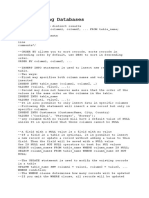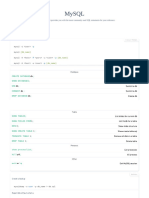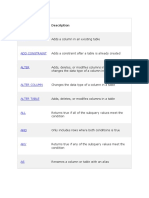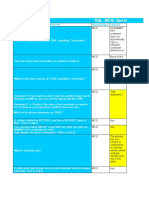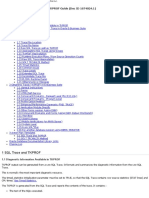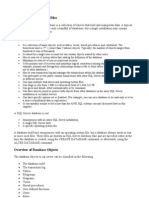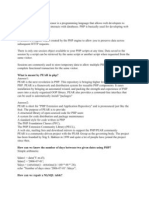0% found this document useful (0 votes)
20 views6 pagesSQL Queries Explained
The document provides a comprehensive overview of SQL commands, including basic SELECT queries, data filtering, sorting, aggregation functions, grouping, joins, modifying data, creating and altering tables, deleting data, subqueries, constraints, transactions, indexes, and views. Each section includes example queries and brief explanations of their purposes. This serves as a reference guide for performing various database operations using SQL.
Uploaded by
karimwerrak1Copyright
© © All Rights Reserved
We take content rights seriously. If you suspect this is your content, claim it here.
Available Formats
Download as PDF, TXT or read online on Scribd
0% found this document useful (0 votes)
20 views6 pagesSQL Queries Explained
The document provides a comprehensive overview of SQL commands, including basic SELECT queries, data filtering, sorting, aggregation functions, grouping, joins, modifying data, creating and altering tables, deleting data, subqueries, constraints, transactions, indexes, and views. Each section includes example queries and brief explanations of their purposes. This serves as a reference guide for performing various database operations using SQL.
Uploaded by
karimwerrak1Copyright
© © All Rights Reserved
We take content rights seriously. If you suspect this is your content, claim it here.
Available Formats
Download as PDF, TXT or read online on Scribd
/ 6










